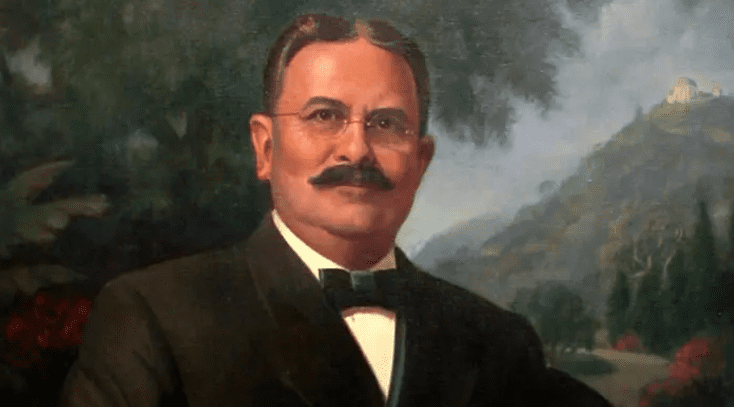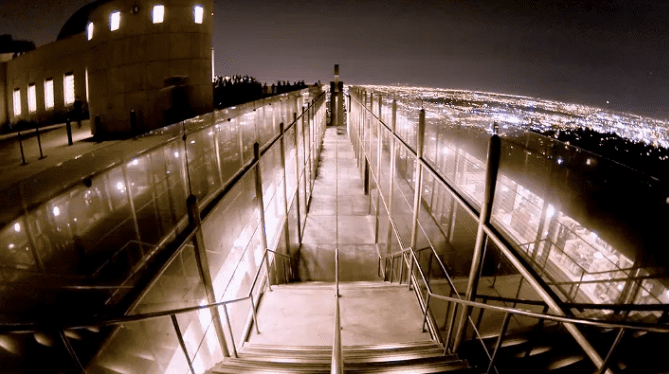Opened in 1935, Griffith Observatory has gained worldwide fame ever after. It is the most visited public observatory in the world. So how did it all start? Its history began with the vision, inventions, innovations and inspiration of some person. The website LA-future will tell more about it all as it describes the city well.
The beginning of the largest iconic landmark of the city
The observatory offers an incredible view from the Pacific Ocean to Downtown Los Angeles. The impressions of locals who came to the opening of the observatory on May 14, 1935, were remarkable. In the first five days, the institution was attended by more than 13,000 visitors.
But the history of the famous attraction began much earlier. As it often happens, the establishment was named after one figure. This person was Colonel Griffith, who in December 1896, donated 3015 acres of land (the area around the observatory) to the city. Moreover, in his will, being extremely generous, the colonel allocated funds for the construction of the institution. The planetarium and exhibit hall were built with this money. Colonel Griffith dreamed of making astronomy accessible to the general public, and his wish was fulfilled.

Griffith Observatory Construction
It was clear from the planning and preparation stage that the project would be impressive. A team of leading astronomers and scientists was hired for these purposes:
- George Ellery Hale. This man controlled the creation of telescopes at other, no less famous observatories (Palomar and Yerkes). In the team, he was in charge of the whole construction project of Griffith Observatory.
- physicist at the California Institute of Technology Edward Kurth, drafted the preliminary plans. Subsequently, under his supervision, construction was carried out.
- the final plans for the observatory’s new building were overseen by architects John C. Austin and Frederic M. Ashley.
- the architects hired Russell W. Porter as a consultant because the man was known as the “patron saint” of the amateur telescope movement.
Therefore, a professional team of people with clear knowledge and vision of the future observatory was formed. The design of the building perfectly matches grandiose and monumental styles with shiny copper domes.
The observatory was constructed during the Great Depression, when the materials, as well as labor, were in abundance and were low-priced. The spirit of the citizens and their interest was felt in the public project.

Large-scale reconstruction
The institution was closed for renovation in 2002, which was estimated at 93 million dollars. In 2006, the observatory was reopened to all visitors. Here is what has changed in four years:
- exhibit space was significantly expanded
- the Art Deco building was renovated
- the old planetarium dome was replaced with a new one
- extended lower level underground allowed the opening of new exhibits to attract more visitors. Also, guests can not resist and visit the cafe and a gift shop that offers different souvenirs
- new Leonard Nimoy Event Horizon Theater was founded, and Café at the End of the Universe, which is a tribute to Douglas Adams’ restaurant, was opened. Its chef is the renowned Wolfgang Puck.
Each exhibition area is dedicated to a certain aspect of observation and deserves special attention.

Samuel Oschin Planetarium
Planetarium presents cutting-edge technologies that will interest audiences of all ages. The first thing that catches the eye is a 22.86-meter-high aluminum dome. It looks impressive because it is one of the largest planetarium domes in the world.
During the restoration, the vintage star projector was replaced with an up-to-date one. The 300-seat exhibit hall has very comfortable drop-seats, allowing everyone to enjoy unforgettable experiences from the planetarium show.
The observatory adheres to the long tradition of offering viewers exclusively live programs with hosts. Applying this approach, they have the opportunity to communicate with the audience.

Zeiss Projector
Imported from Germany, a 12-inch projector is installed on the roof dome (east end of the building). Up to 600 people have the ability to view the night sky. They can observe the Moon, planets and bright stars of the Milky Way.
This is one of the most popular public places as it allows people to witness celestial events.
The Digistar 5 projection system is also a highly attended destination.

The Wilder Hall of the Eye
It is located on the main level of the facility. The hall represents the visual image of nature and progress achieved by human observation of the sky. There, one can find tools that are used for these studies, for example, the Tesla coil, made by Earle Ovington back in 1910. A year after Ovington’s death in 1936, the Tesla coil was repaired by electrician Kenneth Strickfaden and donated to Griffith Observatory.

Multimedia theater
Modern Leonard Nimoy Event Horizon Theater houses 200 people who can enjoy the venue. The multimedia theater hosts lectures, demonstrations and films. In this hall, museum guides give speeches and hold various events.
This place is also extremely important as part of school programs. Here, every viewer feels comfortable and close to the presenters.
The most accurate astronomical image
The attraction known as “The Big Picture” is the most precise picture located at the bottom level. It depicts clusters of galaxies, stars, distant quasars, asteroids and even one comet.
The whole picture is placed within arm’s reach. The same can be seen by using telescopes.

Astronomers Monument
It is worth mentioning another landmark located outside. Before entering the observatory, it is better to stop and admire the exterior of the building. Different exhibits, elements, Solar System Lawn Model, and a stunning viewing deck on the rooftop attract a lot of attention.
All visitors are greeted by the Astronomers Monument at the entrance. This is a concrete sculpture located on the territory of the facility. It commemorates such prominent astronomers as Galileo, Herschel, Hipparchus, Copernicus, Kepler and Newton.

The Gottlieb Transit Corridor
The famous Robert J. and Suzanne Gottlieb Transit Corridor is a 45.72-meter-long and 3.05-meter-wide monumental glass-walled passageway. The corridor is built on the western part of the observatory. Its shape resembles ancient temples and medieval churches (was updated for visitors of the 21st century).
The main character – Rebel Without a Cause Monument
Visitors will be surprised to see at Griffith Observatory a sculpture of James Dean. He starred in numerous TV shows and movies but is most remembered for the film Rebel Without a Cause (1955). Passing into the western part of the building, visitors will see a bust of the actor.
Modern Griffith Observatory is, without exaggeration, a national leader in public astronomy. It’s a favorite meeting place for Los Angeles residents and guests. Programs, special events and public “star parties” one can find on the official website. The grounds of the Observatory, as well as its unique exhibits and telescopes, are open daily and free of charge.



